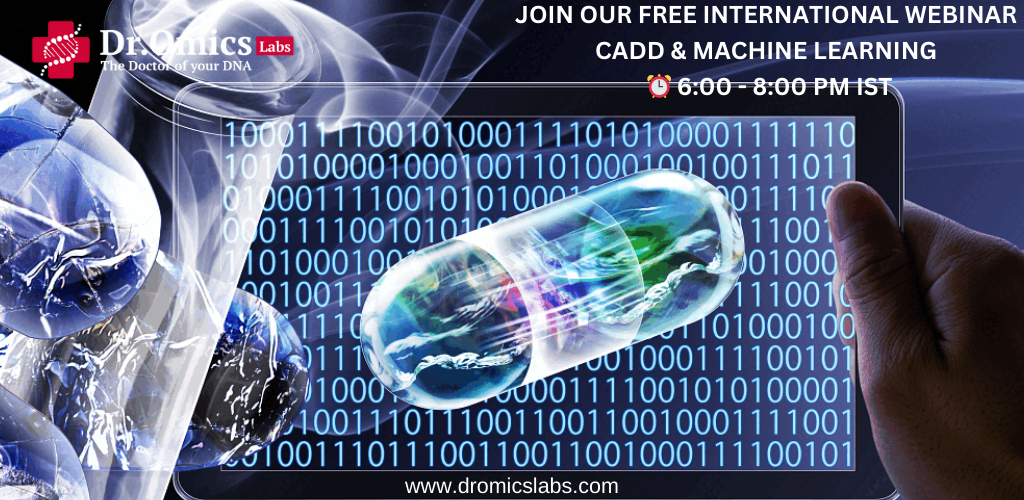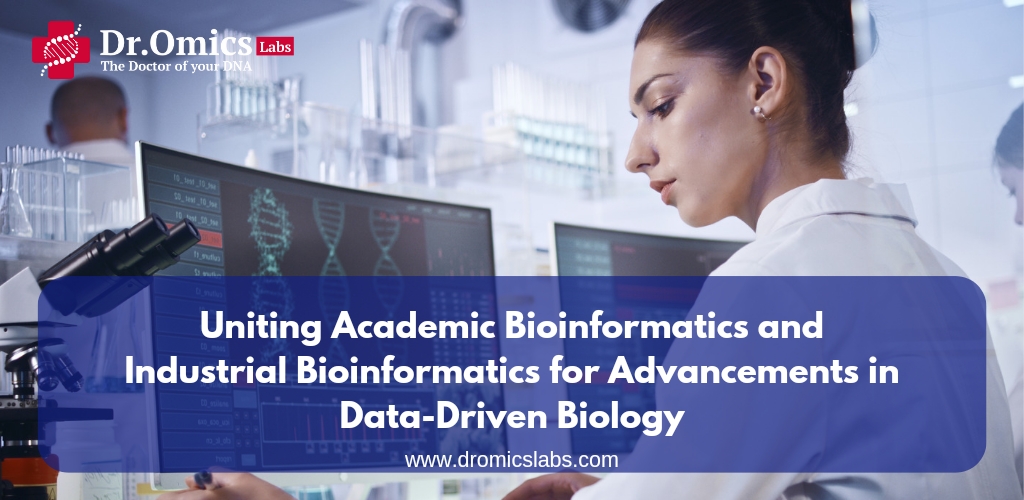The route of drug development is analogous to traversing a difficult maze with high risks. Traditional procedures are both time-consuming and expensive, with frequently low success rates. According to a recent research, the average cost of producing a new medication is $2.6 billion, with fewer than 14% making it through the arduous approval procedure. Scientists are looking to digital partners to transform this landscape—enter Computer-Aided Drug Design (CADD). It is cutting-edge technology that transforms the drug development process by functioning as a virtual assistant to streamline and accelerate the hunt for new medications.
Role of CADD in Drug Discovery
Discovering new medicines is like solving a tricky puzzle. Scientists work hard to find and improve special compounds that can help fight diseases. But the usual way of doing this takes a lot of time, costs a ton of money, and often doesn’t work out. A recent study found that making a new drug costs around $2.6 billion on average, and only about 13.8% of them actually make it from the early stages to getting approved.
To tackle these challenges, scientists are teaming up with computers. They’re using computer-aided drug design (CADD), which is like having a digital helper. This high-tech friend speeds up the process and makes it easier to find and develop new drugs. It’s like having a smart assistant in the journey to create important medicines.
CADD plays multiple roles in drug discovery, including :
- Filtering large compound libraries into smaller subsets with predicted activities for biological testing.
- Optimizing lead compounds to improve their pharmacokinetics and pharmacodynamics properties.
- Designing novel compounds by fragment or de novo design approach.
- Leveraging chemical and biological information about ligands and/or targets to identify and optimize new drugs.
- Predicting the activity, toxicity, and binding affinity of compounds using quantitative structure–activity relationship (QSAR) and pharmacophore models.
- Exploring the 3D structure and interaction of the target macromolecule and the ligand using structure-based drug design (SBDD) and docking methods.
CADD has become an indispensable tool in modern drug discovery and development, as it can reduce the time, cost, and risk of failure in drug discovery. CADD has also contributed to the development of several clinically approved drugs, such as Aliskiren, Boceprevir, Captopril, Dorzolamide, Nolatrexed, Oseltamivir, Rupintrivir, Saquinavir and Zanamivir.
Role of Machine Learning in Drug Discovery and Development
One of the most promising and rapidly evolving areas of CADD is the application of machine learning (ML) techniques. ML is a branch of artificial intelligence that enables computers to learn from data and make predictions or decisions without explicit programming. ML can handle complex and high-dimensional data, such as molecular structures, protein sequences, gene expression, and phenotypic profiles, and extract useful patterns and features that are not easily accessible by human experts or conventional methods.
ML has been used for various CADD tasks, such as:
- Target structure prediction: ML can predict the three-dimensional structure of a protein target from its amino acid sequence, which is essential for structure-based drug design. For example, AlphaFold, a deep learning system developed by DeepMind, achieved unprecedented accuracy in predicting protein structures in the 2020 Critical Assessment of Protein Structure Prediction (CASP14) challenge.
- Binding site prediction: Finding spots on a protein’s surface where it might link with a small molecule is made easier with Machine Learning. This info guides the checking and screening of potential matches. Consider DeepSite, a special computer system—it’s quite good at identifying these connection spots, doing so more accurately and quickly than older methods like SiteMap and LIGSITE.
- Virtual screening: Large library of compounds can be ranked using ML, based on their predicted affinity or activity against a protein target, which can facilitate the identification of novel hits. For example, DeepVS, a deep learning framework, can perform virtual screening using only the SMILES representation of compounds, without the need for molecular descriptors or fingerprints.
- Lead optimization: ML can optimize the chemical structure of a lead compound to improve its potency, selectivity, pharmacokinetics, and safety, which can reduce the attrition rate in the later stages of drug development. For example, REINVENT, a generative reinforcement learning model, can design novel molecules with desired properties and synthetic accessibility, while avoiding unwanted substructures and toxicity.
- Toxicity prediction: The potential adverse effects of a compound on human health and the environment can be predicted with the help of machine learning, which may avoid costly and unethical animal testing. For example, DeepTox, a deep learning model, can predict the toxicity of compounds across multiple endpoints, such as mutagenicity, carcinogenicity, and hepatotoxicity, with higher accuracy than traditional QSAR models.
Current Challenges For Machine Learning in Drug Discovery
The integration of CADD and ML has the potential to revolutionize the drug discovery process, by enabling the rapid and rational design of novel and effective drugs. However, there are also some challenges and limitations that need to be addressed, such as:
- Data Quality and Availability: The effectiveness of these models relies on the quality and quantity of training and validation data. However, biological and chemical data often pose challenges—being noisy, incomplete, inconsistent, or biased. To address this, essential steps involve data curation and standardization. Additionally, data integration and collaboration become crucial due to data scattered across sources and protected by intellectual property rights.
- Model Interpretability and Explainability: Machine learning models, especially the deep learning variety, are often perceived as black boxes, meaning their internal workings are not transparent to human users. This lack of transparency raises concerns related to trust, accountability, and ethics, particularly when these models influence critical decisions like drug approval or clinical trials. Hence, achieving model interpretability and explainability becomes crucial. This provides insights into the rationale behind predictions, aiding in the identification and correction of errors or biases. Model
- Validation and Evaluation: Validating and evaluating machine learning models for Computer-Aided Drug Design (CADD) is not a straightforward process. Numerous factors, such as data set choices, splits, methods, parameters, and metrics, can influence results. To ensure reliability and robustness, standardized metrics and benchmarks are crucial. This helps in providing a fair and comprehensive comparison of different models and methods, promoting reproducibility and reusability in the field.
Therefore, standardization and best practices are needed to provide a fair and comprehensive comparison of different ML models and methods, as well as to facilitate the reproducibility and reusability of the models.
The Future of Drug Discovery is Here
The future of drug discovery is a fascinating and rapidly evolving field, where new technologies and approaches are being applied to find and develop novel medicines for various diseases. Some of the trends and challenges that are shaping the future of drug discovery are:
- Personalized medicine: The use of genomic, proteomic, and other biomarkers to tailor treatments to individual patients or subgroups of patients, based on their genetic makeup, disease profile, and response to therapy.
- Nanoscale medicine: The use of nanotechnology to design and deliver drugs at the molecular level, enhancing their specificity, efficacy, and safety.
- Big data, biometrics, and the internet of things (IoT): The collection and analysis of large amounts of data from various sources, such as electronic health records, wearable devices, sensors, and social media, to generate insights and predictions for drug discovery and development.
- Machine learning, AI, and advanced analytics: The application of artificial intelligence, machine learning, and other computational methods to automate and optimize various aspects of drug discovery, such as target identification, compound screening, lead optimization, and clinical trials.
- Stem-cell medicine: The use of stem cells and induced pluripotent stem cells (iPSCs) to model diseases, test drugs, and regenerate tissues and organs.
- Digital health: The use of digital platforms and tools, such as telemedicine, mobile apps, and online communities, to improve patient engagement, adherence, and outcome.
- Genetic engineering and bioprinting: The use of gene editing, such as CRISPR-Cas9, and bioprinting techniques, such as 3D printing of living cells, to create customized biological structures and tissues for various applications in medicine and biotechnology.
In conclusion, CADD and ML are two powerful and complementary tools that can enhance and expedite the drug discovery process. By combining the domain knowledge and expertise of CADD with the data-driven and adaptive learning capabilities of ML, novel and effective drugs can be discovered and designed in a more efficient and rational way. However, there are also some challenges and limitations that need to be overcome, such as data quality and availability, model interpretability and explainability, and model validation and evaluation. Therefore, further research and collaboration are needed to address these issues and to advance the field of CADD and ML for the future of drug discovery.
Emerging Trends in Bioinformatics: CADD and ML – Free Webinar
Join us at Dromics Labs for a free webinar titled “Emerging Trends in Bioinformatics: CADD and ML.” This webinar is a golden opportunity for those keenly interested in leveraging machine learning for drug discovery. Don’t miss the chance to learn about the latest insights shaping the future of bioinformatics.
– Registration Deadline : 03 Dec 2023
– Registration Link : Click Here





What’s up, the whole thing is going well here and ofcourse every one is sharing
information, that’s in fact fine, keep up writing.